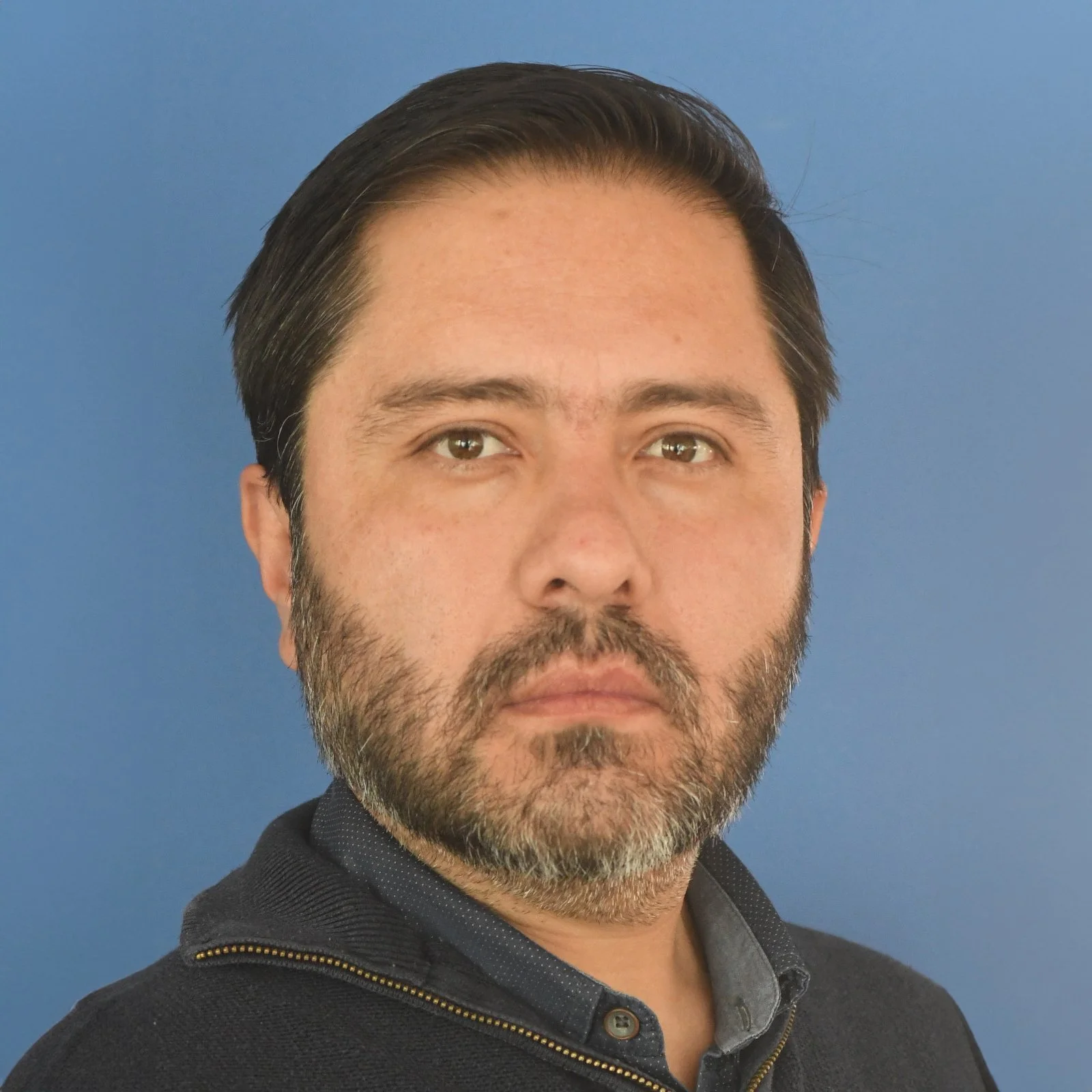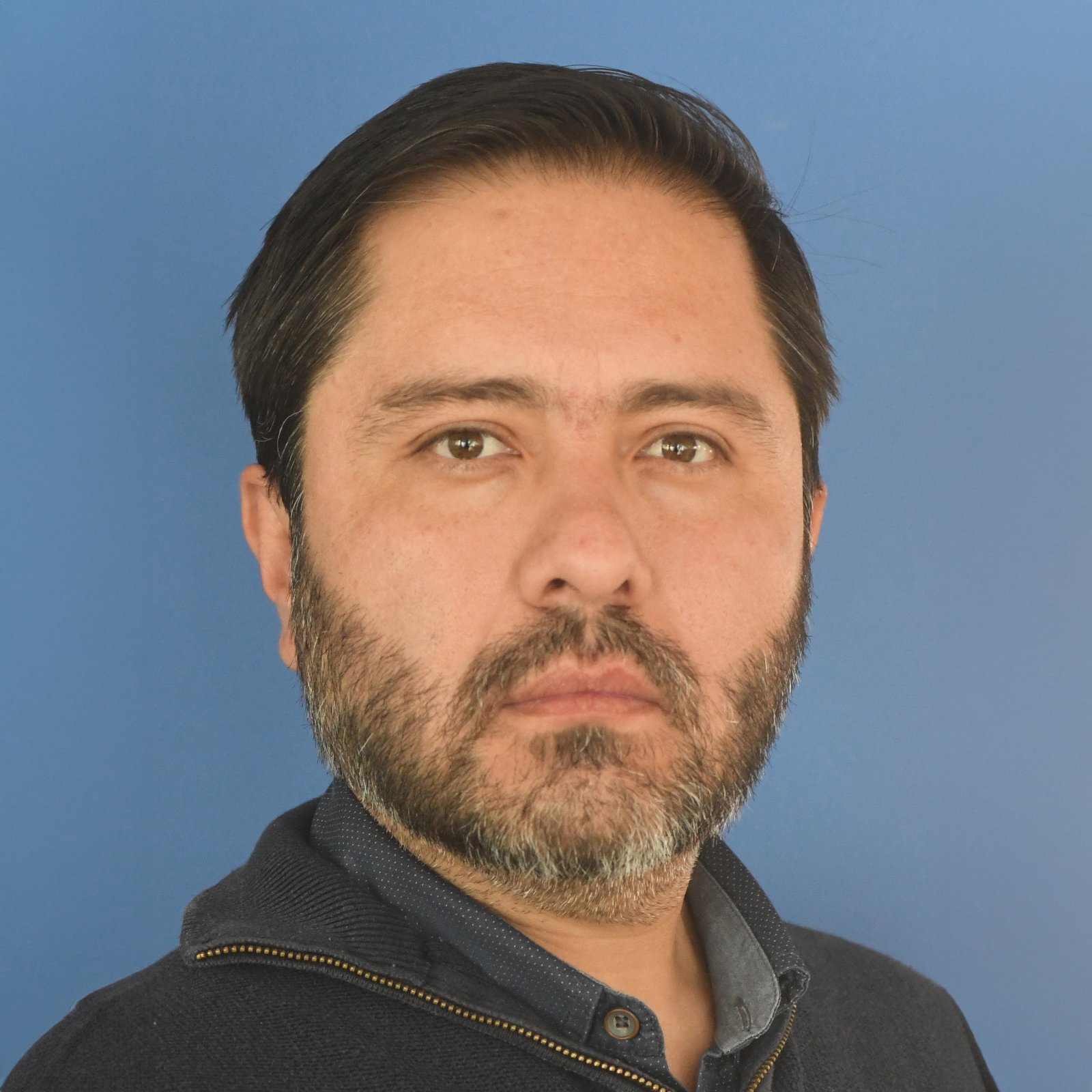Border Restrictions Advance in Latin America
Asylum seeking migrants from China try to stay warm next to a fire in an open-air holding area next to the U.S.-Mexico border near the small community of Jacumba Hot Springs, in San Diego County, on December 2023. Photo by K.C. Alfred/ZUMA Press Wire/Alamy Stock Photo
Echoes of U.S. Border Policies Impact Ecuador, Restricting Chinese Migrants.
Editor’s note: This article is published in partnership with the Puente News Collaborative, a bilingual nonprofit newsroom, convener and funder whose mission is to provide high-quality news and information about the U.S.-Mexico border. Alfredo Corchado is executive editor and correspondent for the collaborative.
Journalists Wendy Fry and Angela Kocherga, news director of KTEP, contributed to this report.
Haga clic aquí para leer el reportaje en español.
QUITO, Ecuador — The tiny and increasingly violence plagued country of Ecuador has for years served as a main conduit for migrants from Asia, the Middle East and Africa to begin the overland trek to the U.S. border.
Now, amid a political shift here and a full court press by the Biden administration to staunch the flow of illegal migration, Ecuador is shutting its door, at least to the growing number of Chinese migrants using it as a trampoline to places like Texas, California and New York.
On July 1, Ecuador began requiring visas for visitors from China, perhaps signaling a delicate shift in the country’s alignment away from China under President Daniel Noboa, a U.S. educated son of one of the country’s richest men.
The policy turnaround underscores how global migration is challenging governments worldwide, testing the tolerance of their citizens and drawing intense pressure from Washington, analysts say.
“Extra continental migrants are using South America as a bridge to get to Central America and eventually to the United States, forcing countries to place new restrictions,” said Ariel G. Ruiz Soto, senior policy analyst at the Migration Policy Institute in Washington D.C, referring to migration from China and other non-Latin American countries. “In the end a lot of the pressure to stop this flow comes from the United States and even the region, including Guatemala and Panama.”
A U.S. official in Quito declined to comment on Ecuador’s new policy.
Secretary of Homeland Security Alejandro Mayorkas said the U.S. “welcomes” Ecuador’s move to “require visas for passport holders from the PRC (People of Republic of China) given smugglers’ efforts to exploit that route.”
Also on July 1, the U.S. and Panama signed a “removal flight program” agreement to “reduce unprecedented irregular migration through the Darien region, through which over 520,000 migrants transited in 2023,” according to the State Department. Over the weekend, DHS said it “conducted first removal flight” since 2018 “in close coordination with” China’s National Immigration Administration.
Bus station in the north of Quito, one of the most popular destinations is Tulcan on the border with Colombia. From there, migrants travel quietly to reach the Darién Gap. Photo by Alfredo Corchado
Ruiz and other analysts believe the Chinese migration will continue, albeit in a more low key, nebulous fashion.
“When the only way to seek refuge in the United States is to set foot on U.S. soil to access our backlogged asylum system, then smuggling networks will always make big profits bringing people to U.S. soil,” said Adam Isacson, a security analyst with the Washington Office on Latin America, or WOLA, a think tank. “Those networks are resilient and creative.”
“There are 20 countries on the Latin American mainland that with the stroke of a pen at any time could end up becoming a new entry point,” Isacson added.
The increase in Chinese border crossers comes as overall apprehension numbers have decreased on the southern border. Recent statistics from the U.S. Customs and Border Protection, show that total migrant "encounters" dropped to about 179,000 in the month of April, a dramatic plunge from December, the highest monthly total on record, with 302,000 encounters, according to U.S. Customs and Border Protection. Officials have credited stepped-up enforcement by Mexican authorities for the overall slowdown.
Earlier this month, President Biden, facing re-election in November with immigration promising to play an outsized role, issued a sweeping executive order aimed at curbing record migrant arrivals at the U.S.-Mexico border. Under the order, officials can quickly remove migrants entering the U.S. illegally without processing their asylum requests.
Chinese asylum seeking migrants hold their passports and paperwork as they prepare to board a bus near the small border community of Jacumba Hot Springs before heading to a processing facility on December 2023. Photo by K.C. Alfred/ZUMA Press Wire/Alamy Stock Photo
EXORBITANT SMUGGLING FEES
Costs paid by Chinese to smugglers vary, but a smuggler in Ciudad Juarez, bordering El Paso, recently told USA Today the aided journey can run more than $75,000.
While Texas has been a major gateway in recent years, toughened enforcement by Mexican authorities in states like Tamaulipas, Coahuila and Nuevo Leon has pushed the migration streams westward in 2023. Many of the migrants now pass through Southern California, particularly the Tijuana-San Diego area.
The number of undocumented Chinese nationals detained entering San Diego County from Mexico has spiked in recent years with 947 apprehensions in fiscal year 2022 compared to 27,135 for just the first part of this fiscal year between October 2023 through April, according to numbers from the U.S. Customs and Border Enforcement. Overall, 50,000 Chinese migrants have crossed along the border since 2023.
Near the town of Jacumba, on San Diego’s remote eastern edge, some 20 Chinese migrants recently crouched underneath a blue tarp shielding them from the desert winds. The group, mostly men, used a translation application on their phones to communicate with humanitarian aid workers.
“We’re mostly fleeing the government,” one man said, explaining post-COVID China. “Also, there is no work.”
“UNIVERSAL CITIZENSHIP”
Ecuador became attractive as a migrant springboard 16 years ago when a new constitution recognized the rare concept of “universal citizenship”. That meant welcoming anyone who would arrive in the once peaceful South American country without a visa.
Prominent left-leaning political leaders here argued that new policy would be reciprocated by the rest of the world. The move backfired.
Now, even Ecuador is caught in a narcotics driven gang war, forcing many of its people to flee north.
The new Chinese visa policy in some ways reflects an old one. Ecuador closed its doors to Chinese migrants about a century ago after officials accused them of operating opium smoking dens. That policy eased and Chinese migrant communities have grown in the past 70 years in Guayaquil, Quevedo and other Ecuadorian cities.
With the return of democracy in 1980, Ecuador recognized the People’s Republic of China and has maintained good relations since then. Under ten years of left-leaning government here, which ended in 2017, China became an important supplier of loans allowing Chinese companies to build ports, highways and other public works.
Almost all oil production, Ecuador’s main export, went to China to pay for the loans. China became a key supplier for vaccines and other aid in helping Ecuador cope with the Covid pandemic. Ecuador signed a Free Trade Agreement with China in May 2023.
Post-pandemic, Ecuador started to see an unusual flow of Chinese migrants. And since Ecuador lacks direct flights from China, these migrants arrived via Madrid or Amsterdam, having first passed through Thailand or other Asian countries.
YELLOW FEVER VACCINES
The Chinese were wealthier and better educated than many migrants. They generally don’t mix with other migrants. Many stay in hotels, rather than in migrant shelters. And they guard their privacy. They use translation apps to communicate in English or Spanish. But like others, they were also being lured by social media apps, especially TikTok, to make the journey, said Joshua Peng, a refugee expert at the Washington D.C.-based Wilson Center.
Peng argues the U.S. government needs to “have a presence” in media outlets like TikTok to help “facilitate safer travel, at the very least, or discourage people from making misinformed decisions about this pathway that could be quite dangerous.”
In Quito, dozens of migrants mingle outside a government-run clinic, waiting for the yellow fever vaccine key for their long and arduous journey northward. Many stare at their cell phones, scrolling.
Migrants from various countries gather daily outside a state-run clinic in Quito to receive yellow fever vaccines, essential for their journey north. Photo by Alfredo Corchado
Once vaccinated, many of the migrants — from countries like Haiti, Venezuela or Asia — promptly head for the local bus station.
Armed with the yellow fever vaccine, the migrants board for buses bound for Colombia. At the bus terminal in Quito’s north side. Buses traveling to Tulcan, the last Ecuadorian city before the Colombian border, sport signs written in Chinese.
The five-hour trip costs 10 dollars or less and usually drops migrants at Tulcan in the evening. From there prices soar. As with narcotics, the closer migrants get to the U.S. border the higher the price goes.
Taxi drivers at the station are talkative and helpful. They offer to connect migrants to Colombian colleagues to cross the border saying that there are no controls over Colombian taxis. Once in Colombia, migrants take a series of buses and small boats northward to the Panama border, where a days-long trek through the jungle has become one of the most dangerous passages in the world.
CALIFORNIA DREAMING
From the Quito clinic, a small cluster of six headed for a plain-looking restaurant, with two TVs blaring, near the legislative palace in the center of Ecuador’s capital.
Feasting on dumplings, sweet and sour pork and chicken in garlic sauce, the five men and one woman from China discussed perhaps the biggest obstacle of what will be a seven-country odyssey. That’s the Darien Gap, Panama’s stretch of roadless rainforest.
A small group of Chinese migrants, including Lin Zan and her husband Quan Zang, arrive at a restaurant in Quito to plan their journey through the Darien Gap, aiming to reach the United States via the U.S.-Mexico border. Photo by Alfredo Corchado
Asked why they were leaving China, Lin Zang, a 31-year-old engineer from Beijing, and the only one who spoke even broken English, said firmly, “Freedom.”
Lin Zang and her husband Quan Zang, both 33, discussed reaching their destiny by going through Mexico.
The pair laughed when asked where they would cross into the United States. Texas, California?
“No, no, no. Texas, no." Lin Zang said, referring to smugglers and their fees. "Texas is too high. Expensive. Complicated."
"California is a good option,” she added.
—
Alfredo Corchado is the executive editor for Puente News Collaborative and the former Mexico/Border Correspondent for The Dallas Morning News. He’s the author of “Midnight in Mexico” and “Homelands.” @ajcorchado
Other palabra articles by Alfredo Corchado: A Fresh Cure for Mexico’s Festering Ills?, ¿Una nueva cura para viejos males en México?,In Mexico’s Historic Vote, Politics are Little Changed, Con voto histórico en México, la política cambiaría poco, Words To Live By
Mónica Almeida is an Ecuadorian independent journalist with more than 35 years of experience. She was the Quito bureau chief of El Universo newspaper and later the chief of its Investigative Unit. She came back to Ecuador in 1997 after working some years for Agence France Presse and other publications in Paris. Monica is a fellow of the Nieman Foundation for Journalism at Harvard University. As a member of the International Consortium of Investigative Journalists (ICIJ), she participated in the series Panama Papers, Pandora Papers and Bribery Division.
Mónica Almeida and Mena Mena are part of a book collaborative, Migrantes de Otro Mundo.
Paúl Mena Mena is an Ecuadorian investigative reporter and a professor. He is a member of the International Consortium of Investigative Journalists (ICIJ), ConnectasHub, and the Centro Latinoamericano de Investigación Periodística (CLIP). He collaborates with El Universo, the largest newspaper in Ecuador. He received the National Prize of Journalism Eugenio Espejo in Ecuador twice, in 2018 and 2023. He has taught investigative and data journalism at several universities. @paulmenam
Mónica Almeida and Mena Mena are part of a book collaborative, Migrantes de Otro Mundo.
Dudley Althaus has reported on Mexico, Latin America and beyond for more than three decades as a staff newspaper correspondent. Beginning his career at a small newspaper on the Texas-Mexico border, Althaus had an award-winning 22-year stint as Mexico City bureau chief of the Houston Chronicle. After a four-year run as a Mexico correspondent for The Wall Street Journal, Althaus covered immigration and border issues as a freelancer based in San Antonio for Hearst Newspapers. He has covered every Mexican presidential election since 1988, when Mexico's troubled transition to democracy began. @dqalthaus
Other palabra articles edited by Dudley Althaus: In Mexico’s Historic Vote, Politics are Little Changed, Con voto histórico en México, la política cambiaría poco













